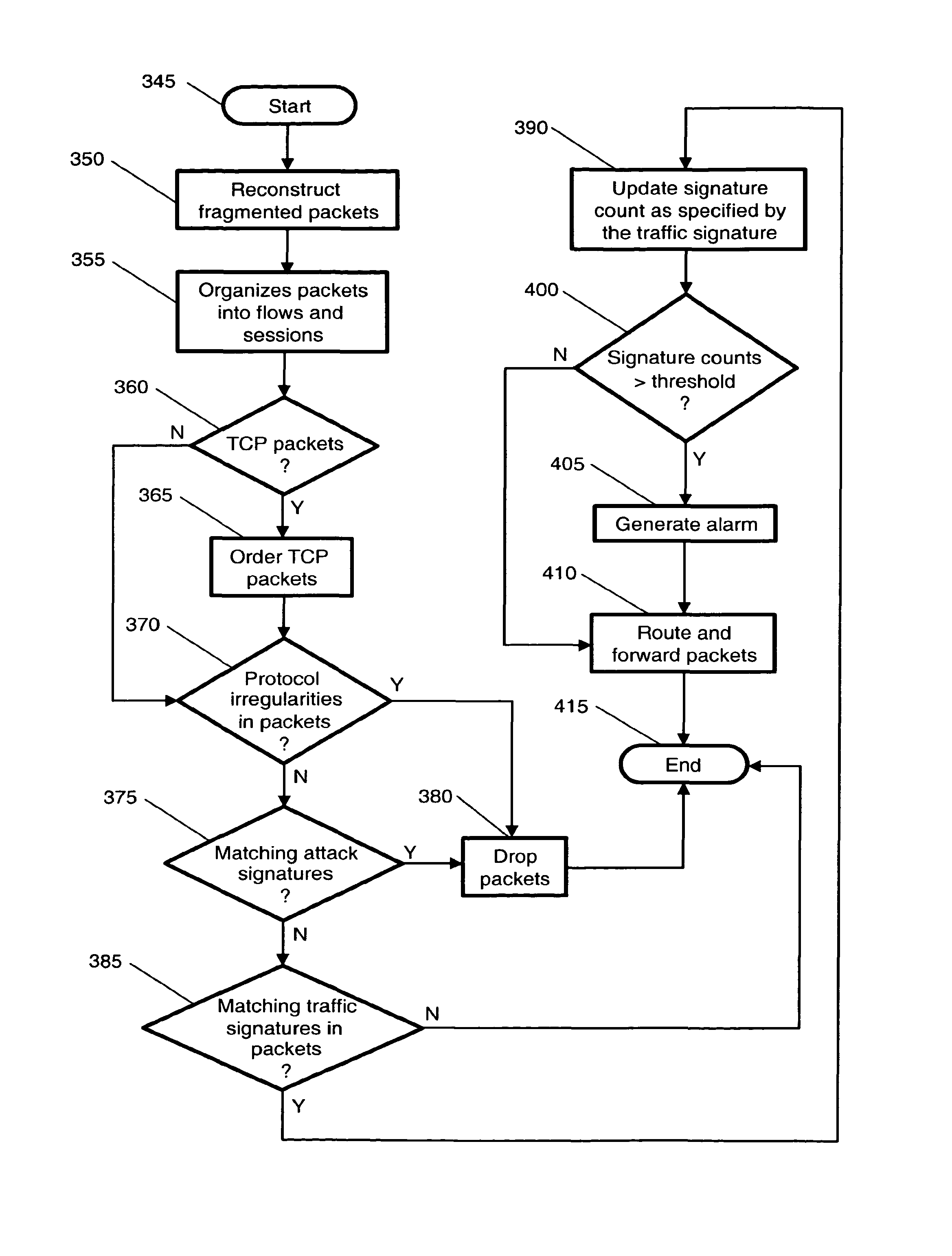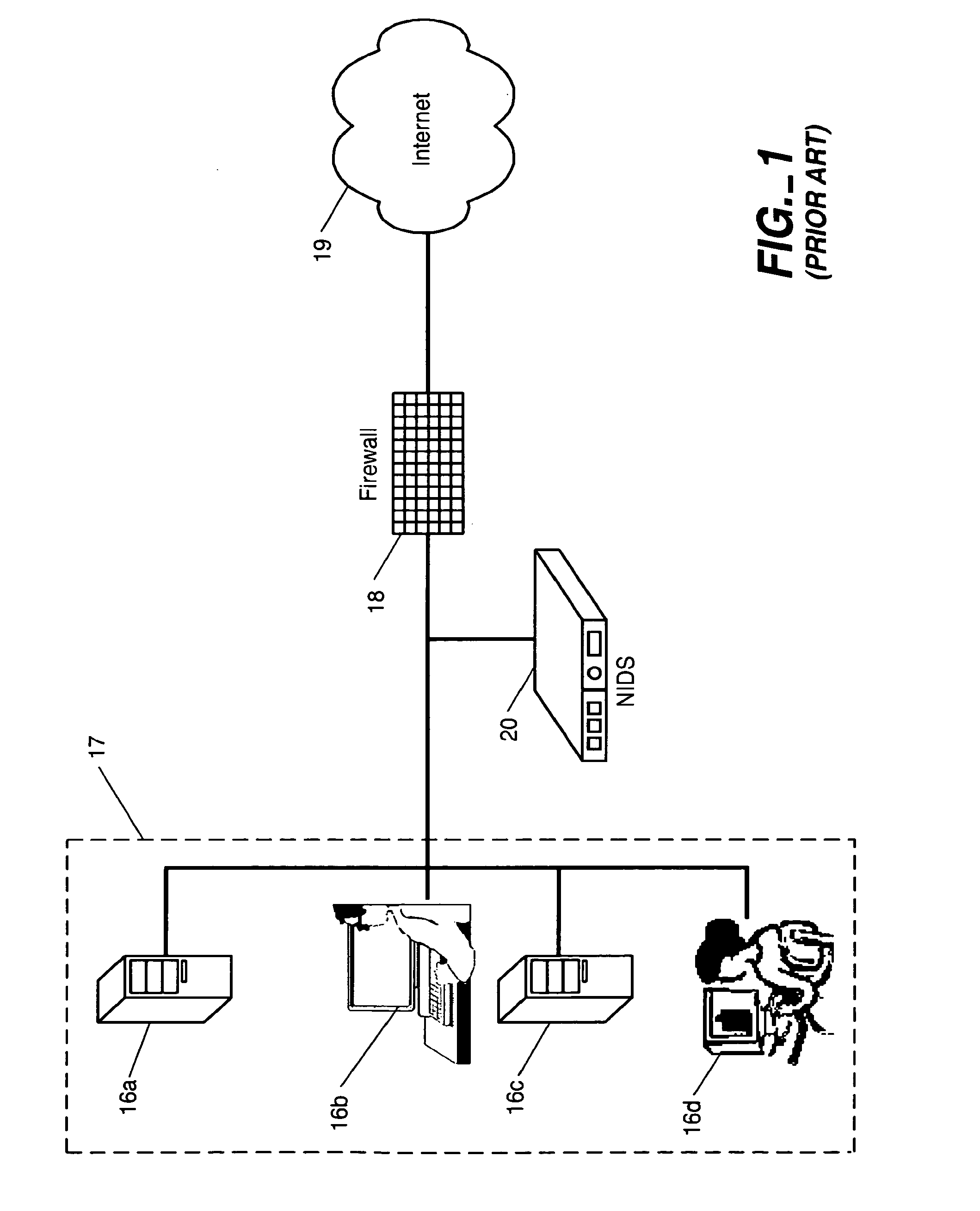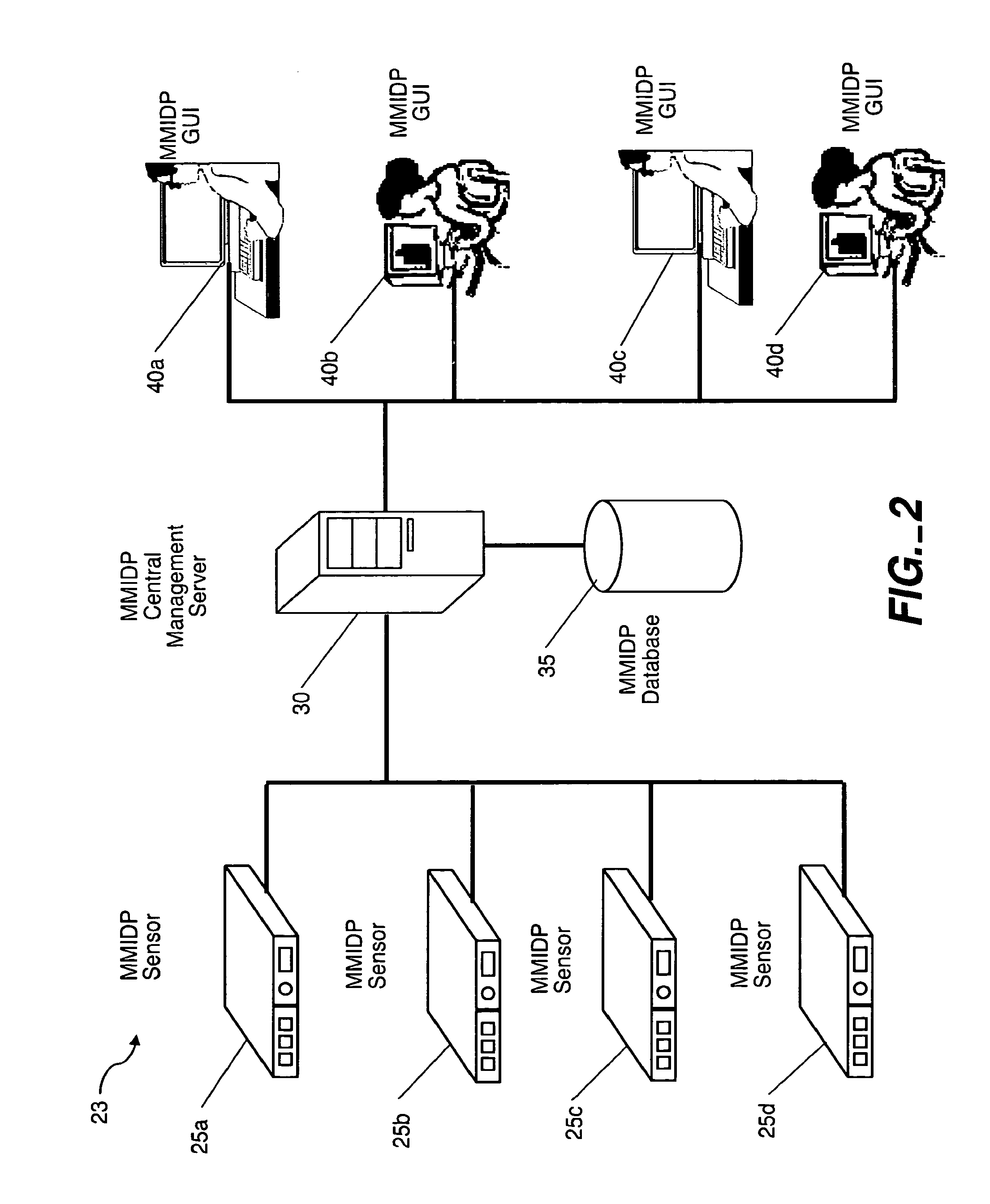While
the Internet protocol structure provides unparalleled benefits to users, it also facilitates unlawful activity by providing a vast, inexpensive, and potentially anonymous way for breaching security on any Internet host, including private networks of which those hosts are a part.
Despite the number of potential network security vulnerabilities, current network security technologies are inadequate and ineffective to detect and prevent the increasingly sophisticated and numerous network security breaches.
However, they cannot examine the application-level content of the packets it is transmitting in any given connection.
Similar to circuit-level firewalls, application proxies do not allow direct connections and force all packets to be screened for suitability.
However, application proxies are typically slower than
packet filtering or circuit-level firewalls because all packets have to be evaluated at the
application layer, that is, every packet passing through an application proxy must undergo de-encapsulation / re-encapsulation before reaching its final destination.
Every new service requires a new
proxy server, and because proxies are highly dependent on many other
system components to operate correctly, such as operating systems, TCP / IP stacks, and runtime libraries, they are vulnerable to application-level security flaws and bugs.
Firewalls are not capable of detecting and stopping network attacks.
For example, once a firewall allows a HTTP connection, it will not be able to detect an
attack against a
web server carried over that connection.
Furthermore, a firewall is not able to detect or prevent attacks made or appeared to be made from inside the firewall, such as the presence of a Trojan program inside the network that may be leaking confidential information to the outside.
However, because they consume considerable resources, they can adversely affect the host's performance.
In addition, successful intrusions that
gain high levels of privilege on the network may disable host-based IDSs and remove traces of their operation entirely.
As such, these systems have several drawbacks.
Second, because more data are being searched, it is more likely for a signature to match irrelevant data and result in a
false alarm.
Third, since packet-signature NIDSs can only find attacks in a packet for which a signature is written, new and often very complicated attacks cannot be detected.
And lastly, packet-signature NIDSs may fail to examine packets when the network traffic is too high.
Nevertheless, there are attacks that conform to the protocol specifications and therefore cannot be detected by protocol
anomaly detection systems.
First, false alarms are often produced by signature-based NIDSs that do not evaluate a signature within the context of the network traffic.
Second, most of the NIDSs discussed above use a single method of detection that is insufficient to comprehensively detect intrusions.
As such, false negatives are produced when the NIDSs do not detect an
attack while it is occurring.
For example, a protocol anomaly NIDS may generate a false negative when a
hacker fools the NIDS to see network traffic differently from the target host so that the traffic can pass through the NIDS but ultimately infect the target host by using sophisticated packet and protocol tampering methods that cannot be detected by a protocol anomaly NIDS.
In addition, some NIDSs are not able to detect “port scans” and “network sweeps” used by attackers to identify potential security and
system flaws that may be exploited.
A further drawback of most of the NIDSs discussed above is that they need to be individually managed and all sensor information resides on the sensor itself.
As the number of sensors increases, management of the sensors becomes increasingly difficult, especially considering the often incomplete logs that are generated.
Additionally, NIDSs cannot directly prevent attacks.
NIDSs work as passive intrusion detection mechanisms, but are not capable to prevent attacks from occurring.
When an
attack is occurring on a network, these systems can notify a network
security administrator to take action after the attack has already taken place but cannot prevent the attack itself.
NIDSs do not sit directly in the path of traffic and cannot actively react to suspend a
network connection being attacked or even redirect the intruding packets to a
safer or more secure
system.
That is, the NIDS does not directly prevent the attack, but simply interrupts it so that the attack may not become any worse.
In doing so, the NIDS may inadvertently interrupt valid network traffic.
That is, this NIDS also does not directly prevent the attack, but simply interrupts it so that the attack may not become any worse.
However, there are several problems with this approach.
First, it takes a period of time for the NIDS to determine that an intrusion has been attempted and that a reset packet should be sent.
As a result, any TCP reset packet that is sent upon detection may be too late.
Second, TCP reset packets are only available for the TCP protocol and cannot therefore be used to prevent attacks taking place using UDP or other connectionless protocols.
And lastly, since a TCP reset packet must carry a valid sequence number within a small
receiver window, a sophisticated attacker can transmit its intruding packets to have the
server's
receiver window change so rapidly that the NIDS will have difficulty in determining which sequence number to put in the TCP reset packet and fail to prevent the attack.
No firewall or NIDSs product, either alone or working in tandem, is able to examine packets allowed onto a network and react to disallowed packets or activity by directly dropping those packets or closing the connection.
In addition, there is no
hybrid NIDS that integrates signature detection, protocol anomaly detection, and other sophisticated methods such as traffic signature detection to achieve higher intrusion detection accuracy and thus reduce the rate of
false positives and false negatives.
There also is no NIDS that provides a centralized, policy-based management solution to control all the NIDS sensors.
As a result, attempting to secure a network using technology and products available today can be impractical, if not impossible.
 Login to View More
Login to View More  Login to View More
Login to View More 


